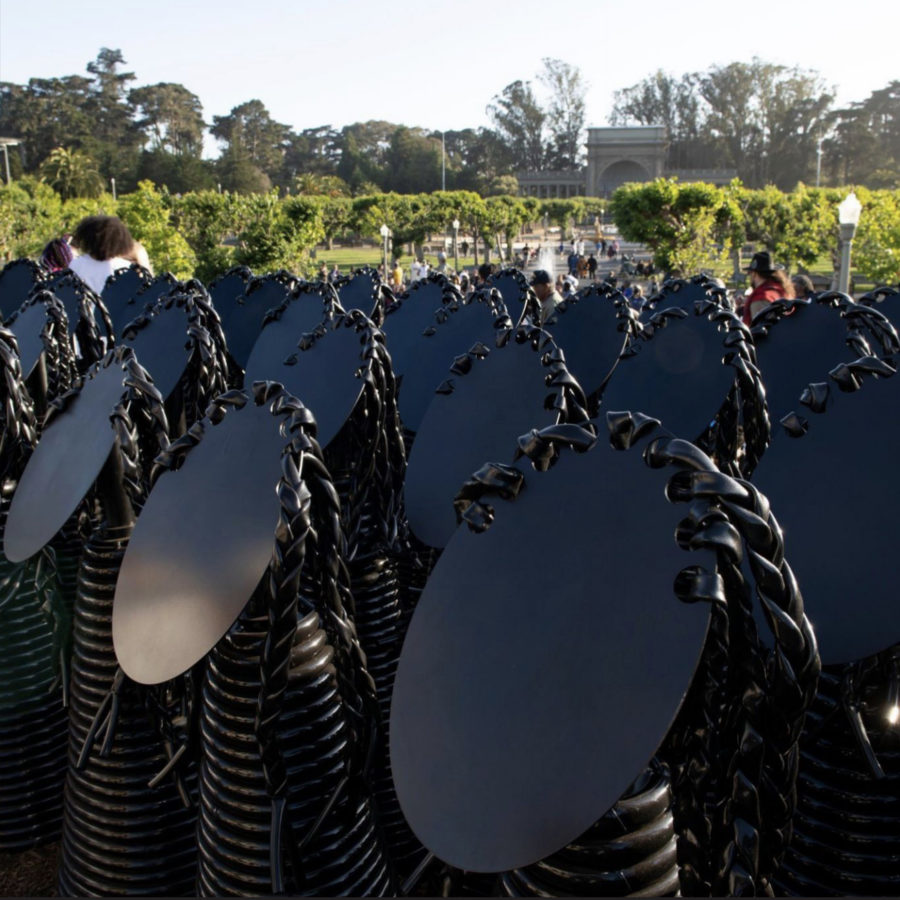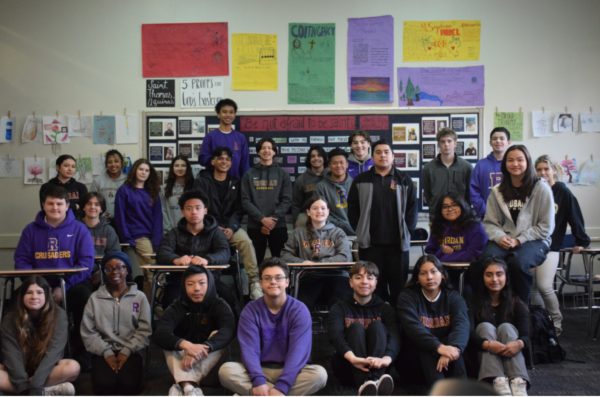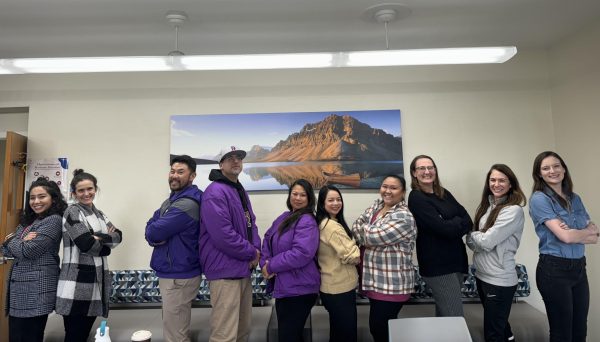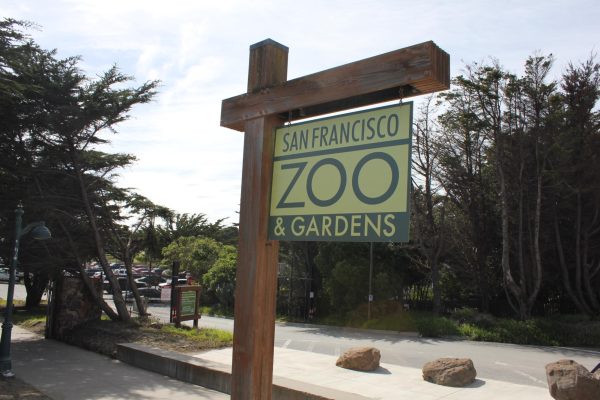Art commemorates African American history
Dana King ‘s artwork titled Monumental Reckoning was unveiled in Golden Gate Park.
November 22, 2021
On June 18, Dana King unveiled Monumental Reckoning in Golden Gate Park.
This art installation—open to the public until June 20, 2023—honors the history of African Americans, notably, the initial 350 that were dragged from their homes and forced into a treacherous crossing of the Atlantic Ocean. This ended in death for many or a brutal life of slavery.
Mahkai Hunt ’23, member of Black Student Union, said, “I feel like if people actually took the time to learn about how other people’s lives were back in history—what certain ethnicities had to go through to get where they are today—it would lead to more equality.”
He added, “I believe this because once you truly learn about how or what someone had to do to get where they are today, you become more sympathetic. Also, you become more aware of what you can do to not make that individual go through that again.”
The inhumane acts that were committed against African Americans originate hundreds of years into this country’s past. Based on the events of the summer of 1619, Africans were taken to the United States aboard the San Juan Bautista with the Mexican coastal destination of Veracruz.
Hunt said, “I hope this piece educates the younger Black community. As being a member of the younger generation of Black students, I feel like we should really learn more about our history, and how so much had to happen just for us to do basic things like attend school and go to certain places like movies and diners.”
Correspondingly Mayor London Breed stated on the San Francisco Recreation and Parks Website, “This powerful public art installation in Golden Gate Park will help us not only commemorate Juneteenth, but also serve as a precedent of how we can honor our past, no matter how painful, and reflect on the challenges that are still with us today.”
Hunt added, “I would also like to share how I feel like it’s really bad how this happened a while ago, and I’m just now knowing of it. I feel like this also has to do with the lack of spreading news or information in the Black community when it’s positive.”
The ambience of the location speaks to the seriousness of its representation. The 350 sculptures representing the spirits of the 350 African Americans who were kidnapped and forced into slavery is depicted using hard black metal tubing shaped into a conical figure with a discus head and thickly braided locks of hair hanging from it.
The sculptures’ placement was formed to encompass the statue of Francis Scott Key, in Golden Gate Park—leaving a thick concrete path for passage. The purpose of surrounding the statue was to bring awareness to his owning of slaves and his composition of the Star Spangled Banner—including a stanza resisting the abolition of slavery.
The opening day of the sculptures involved an impactful ceremony where the words “Lift Every Voice” were displayed to symbolize the voices of the Africans who were killed and brutalized.
As one stands in the middle of these 350 African American souls, the immeasurable moments whereupon they were mistreated wash over one’s mind, and this powerful message comes from them, “Lift Every Voice.”













